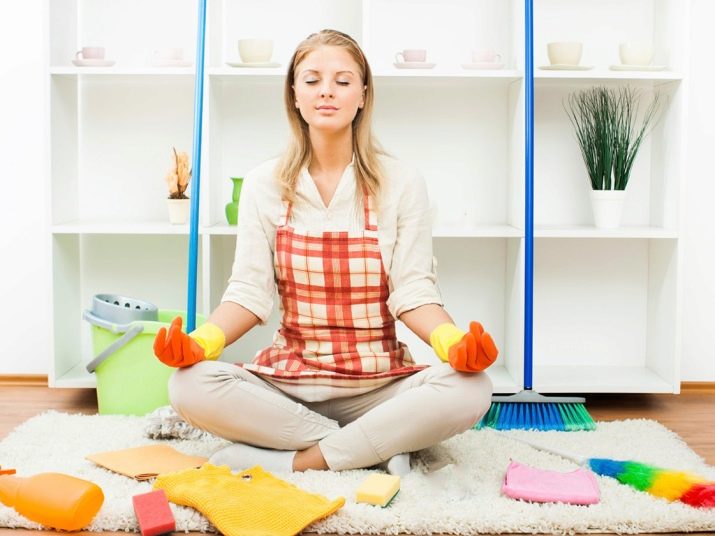What are cleaning wipes?

Cleaning the house is greatly facilitated by the availability of a variety of napkins. They can be used to clean any surface or object. It is important to choose the right model and use it in a special way. There are wipes only for dry or wet cleaning, there are also universal options. When choosing, it is worth considering the properties of the surfaces that will be processed.

Varieties and their purpose
Household wipes can be categorized according to material and use. Large products are usually used for cleaning floors, while small ones are suitable for cleaning a variety of surfaces. Professional wipes are often impregnated and intended only for certain delicate items. For cleaning the apartment, universal rags are often used.
Dry cleaning wipes get rid of dust. Kitchen cloths must be particularly resistant to permanent moisture. They are usually made in such a way that no fungus appears in their structure. The easiest way is to use synthetic options, they dry quickly and do not lose their original appearance for a long time.


Cotton
A simple and widespread option, which has been and is being used by many generations of housewives. Cotton wipes come in a variety of colors and sizes.
The advantages are obvious.
- Cotton absorbs moisture well, such a napkin can be used to remove spilled water.
- The soft, abrasive-free surface allows you to handle delicate materials. In this case, there is no risk of leaving scratches on the surface.
- Reusable wipes can be washed not only by hand, but also in the washing machine.
- The material is environmentally friendly, does not cause allergic reactions.
- The napkin is reusable. It does not lose its properties even after multiple washes.
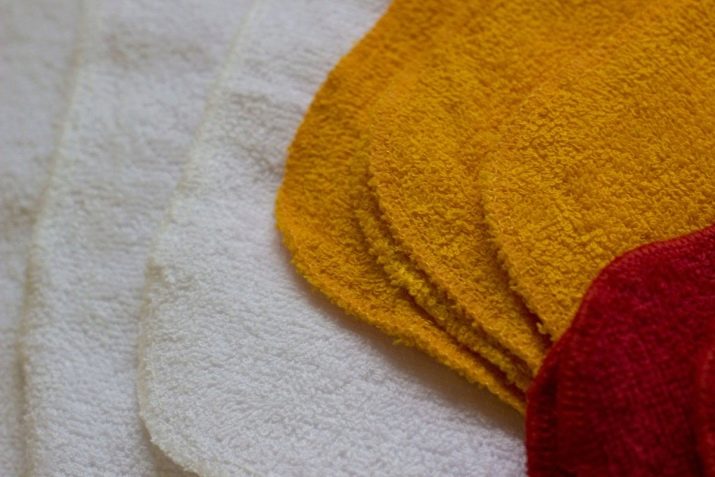
At the same time, the cotton product has disadvantages. So, Usually the napkins are quite large and are not always convenient to use. Intensive cleaning with frequent rinsing can greatly affect the appearance of the product. If the napkin is used more than 4 times, fluff may remain on the treated surfaces.
Moreover, a natural product is more expensive than synthetic counterparts.
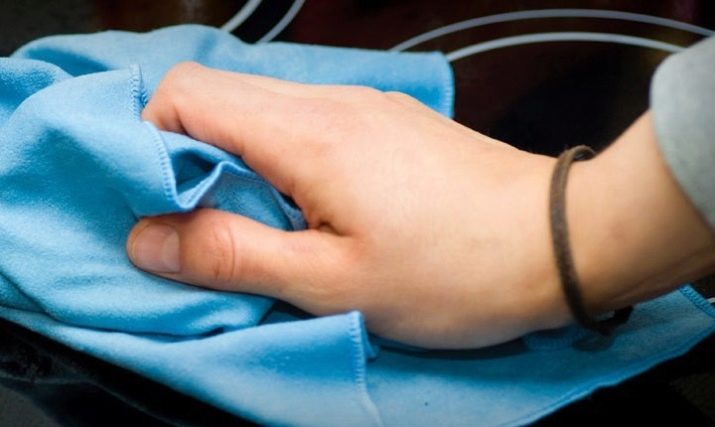
Microfiber
Modern material is used not only for the manufacture of cleaning napkins, but also for towels and clothes. Microfiber products are non-woven and woven. Compared to cotton, the material absorbs 7 times more moisture.
Main advantages:
- cleans the surface well, even if it is uneven or has microcracks;
- absorbs a large amount of moisture;
- the material allows you to thoroughly wash the surface and remove microbes;
- the napkin can be used for dry and wet cleaning;
- the composition of the material does not cause allergic reactions;
- no fibers or lint remain on the surface.
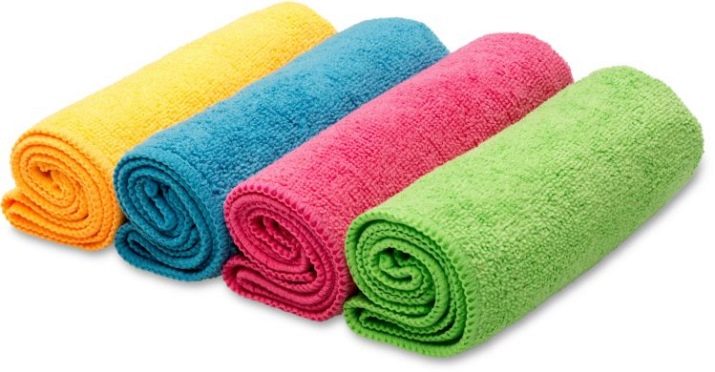
Non-woven wipes last longer, but the cost is higher. Woven fabrics deteriorate over time and begin to leave fibers during harvesting. It is enough to wash the rag in running water to remove dirt; you do not need to use detergents.
They dry quickly, but do not leave products on hot batteries. High temperatures can damage the artificial material.
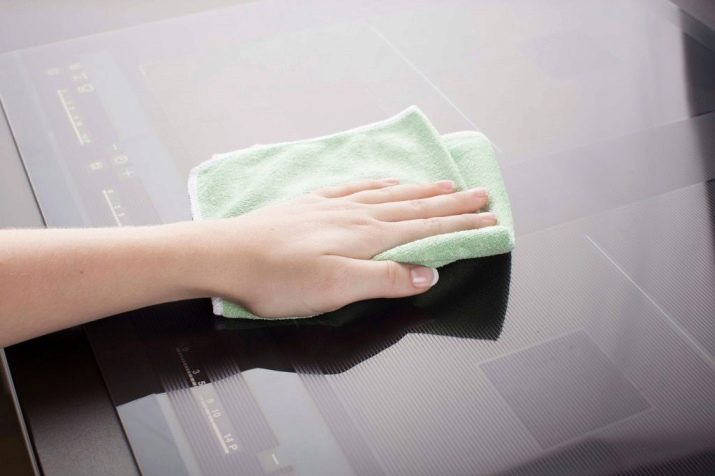
Cellulose
This material is very similar to viscose in characteristics. Cellulose wipes cannot be used for dry cleaning; they need to be moistened at least a little. The fibers themselves in the material are quite fragile, which affects the wear resistance under intensive use.
Main advantages:
- the material absorbs water well;
- the material does not harm the environment, it decomposes;
- when used, no lint remains on the surface;
- mold does not develop on the napkin;
- are often available on a roll, which makes the use as comfortable as possible.
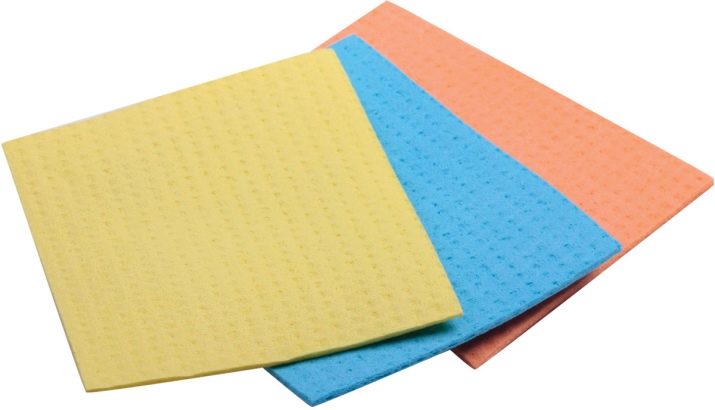
Cellulose products are well suited for high-quality cleaning in the bathroom and kitchen. They do not deteriorate from an aggressive environment, changes in humidity and temperature. The wipes should be replaced regularly as soon as they lose their appearance. That is why roll products are usually sold in large quantities in a package.
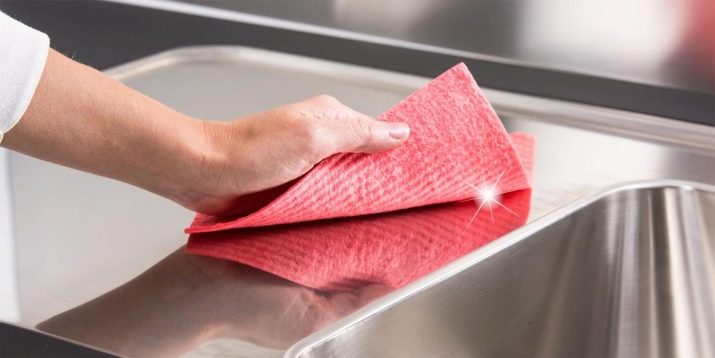
Viscose
Quite popular napkins in different colors. Viscose products often have additional components in their composition. The presence of polyester reduces the cleaning performance.
Main advantages:
- gently clean even delicate surfaces;
- the texture is soft, which allows you to remove dirt even from microcracks;
- viscose dries quickly after washing;
- the napkins have good durability and remain functional even during intensive cleaning.

Viscose products are not used for dry cleaning, they should be slightly damp. Do not wring out the product intensively, otherwise the napkin may deteriorate. It should be noted that viscose napkins are disposable. The material serves as a good breeding ground for pathogenic bacteria.
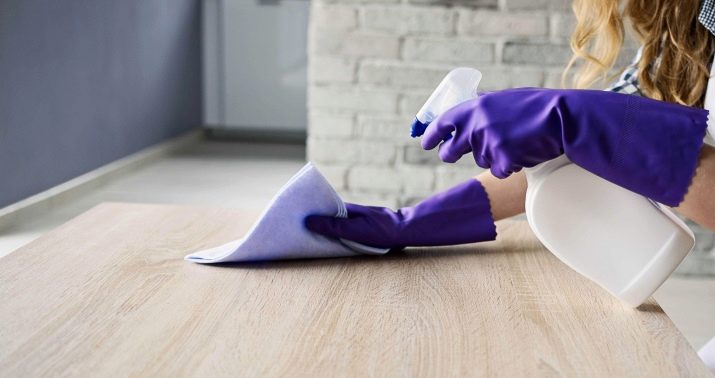
Bamboo
Napkins made of this material have recently appeared on the domestic market. The products are quite expensive and large in size. Bamboo is not used for removing stubborn dirt, but is better suited for light daily cleaning. Also, the material does not wash away dirt from microcracks poorly.
Main advantages:
- the napkin can be used for a long time, it is reusable;
- even suitable for washing dishes, cups and any other dishes;
- used for various surfaces, including delicate ones;
- absorbs water;
- natural material does not cause allergic reactions;
- bamboo has bactericidal properties;
- can carry up to 50 washes without loss of quality;
- dries quickly when naturally dried.
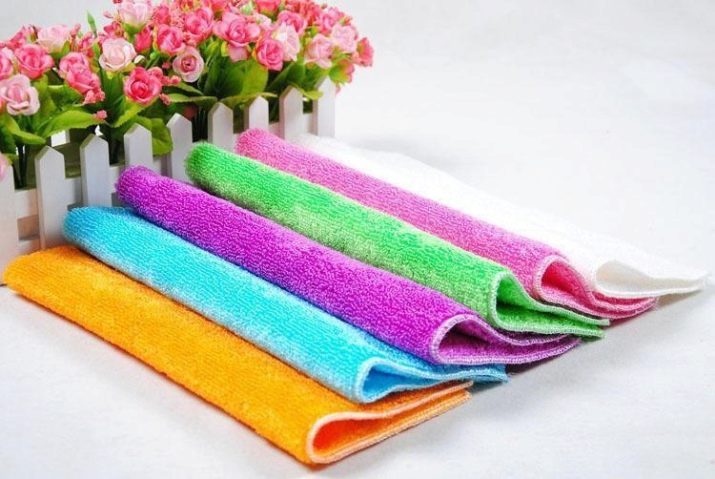
Other
Latex cleaning wipes are less popular. They come in a variety of sizes and colors. Latex cleans various surfaces rather gently. Effectively removes even old and stubborn stains. The rubberized surface feels different from the usual rags.
Reusable wipes are excellent at absorbing moisture. They can even be washed, but not in hot water. Latex does not remove fingerprints from smooth surfaces.
The product is not used dry, only wet.

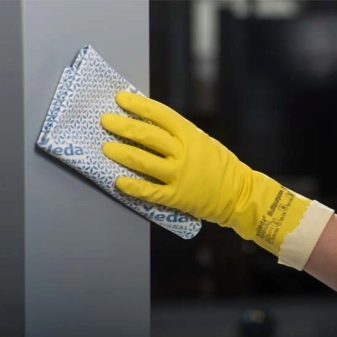
There are also wet wipes for cleaning. They are disposable and impregnated with a special cleaning agent. They are suitable for quickly removing stains, because they are ready for use, so you don't have to waste time wetting. Napkins are used for spot cleaning, because they are suitable only for certain surfaces.
Usually wet wipes are intended for cleaning appliances and small decorative items. They are practically not used in general cleaning. The fibers of the napkins are fragile, so they should be used with care.
When buying, it is important to pay attention to what composition is used for impregnation.
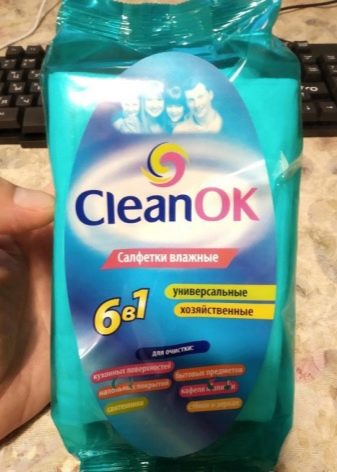
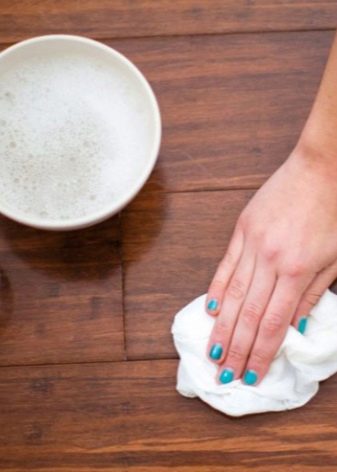
Faux suede products are well suited for glasses and mirrors. They can be used even without additional detergents. The material does not leave lint on the surface. Copes with stains and fingerprints. True, wipes are used only in a damp state.
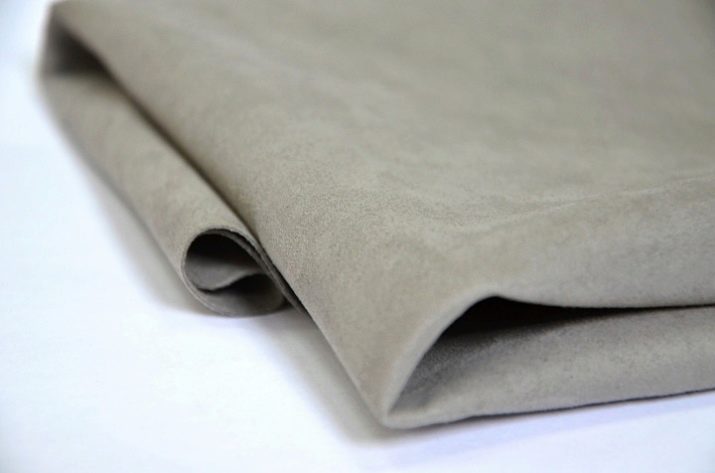
Top manufacturers
There is no perfect product that suits all occasions at once. There are quite a few companies that make cleaning rags. The cost directly depends on the material.
The best manufacturers are listed below.
- "Red Cat". Versatile microfiber cloths allow you to clean virtually any surface. Compact wipes can be used for dry and wet cleaning. The manufacturer offers quality products at a reasonable price.
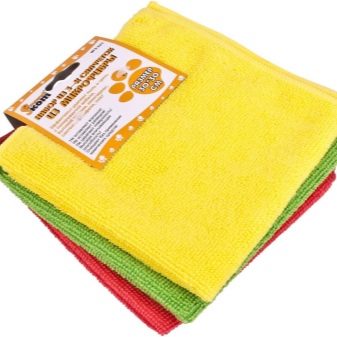
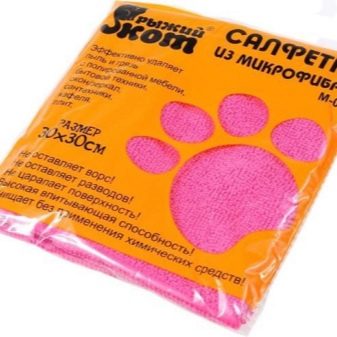
- Vileda. Large viscose wipes are commonly used for cleaning floors. Products at an affordable price have a long service life.

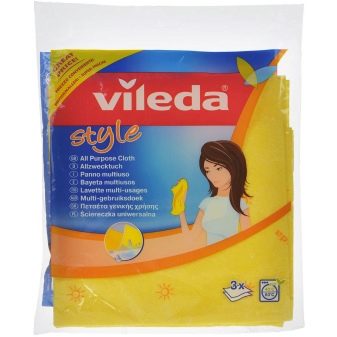
- "Clean". Cellulose wipes are great for cleaning the bathroom. They will easily get rid of limescale and soap deposits. They are also used for cleaning plumbing fixtures.

- Sonax. Microfiber products will help remove dirt even from hard-to-reach areas. Soft material will not leave scratches, damages or streaks. The napkins allow you to clean even delicate surfaces and equipment.
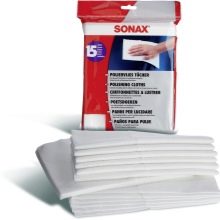

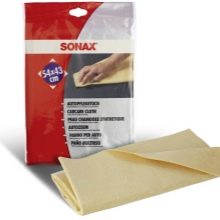
- Kleenex Viva. Cellulose wipes with a slight addition of polypropylene. The products are sold in a roll and can be used for wet cleaning. The rags not only collect dust, but also remove dirt. Suitable for all surfaces. There are 56 pieces in a roll, which is enough for long-term use.
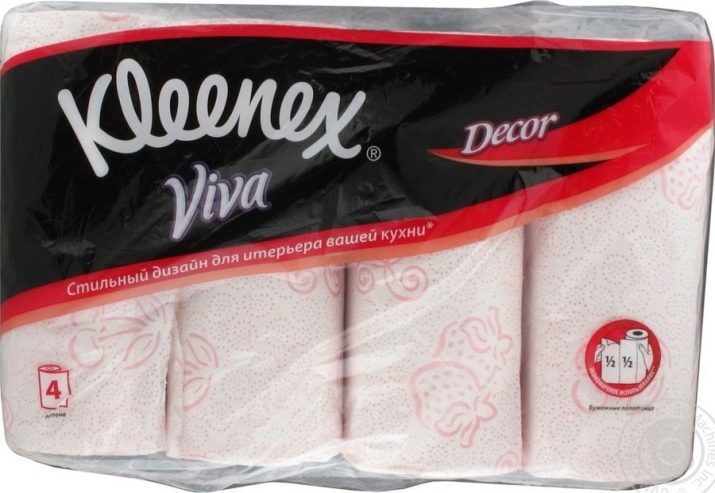
- Pingo. Faux suede napkins allow you to clean windows without additional detergents. They do not leave streaks and lint. Use only wet wipes. In a dry state, the fibers become brittle, the rag can quickly deteriorate.

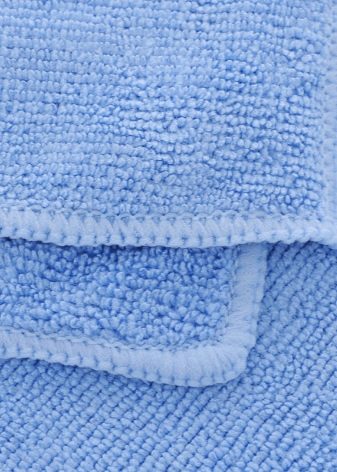
- "White cat". The company has been on the market for over 20 years. "White Cat" sells cleaning products from various global manufacturers that are famous for their environmentally friendly products. Smart rags are very popular. They are composed of dissected microfibers. This allows you to fight tough stains on all surfaces without household cleaning products.
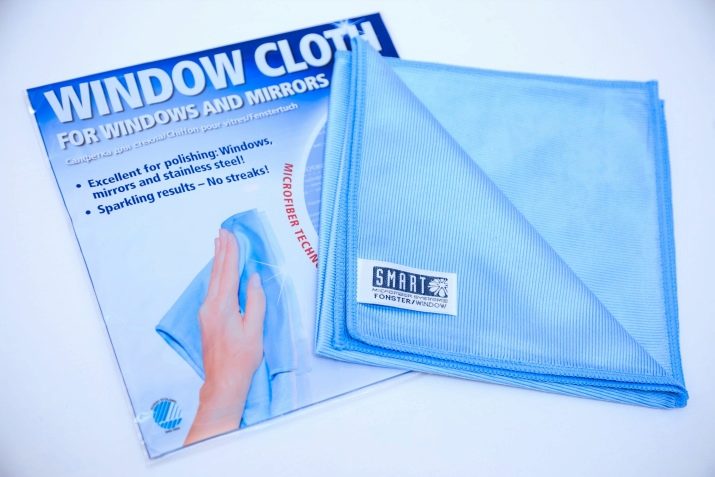
- "Radius". The assortment of rags from different materials for wet cleaning. Napkins for cars are presented separately. All products are of high quality and affordable prices.
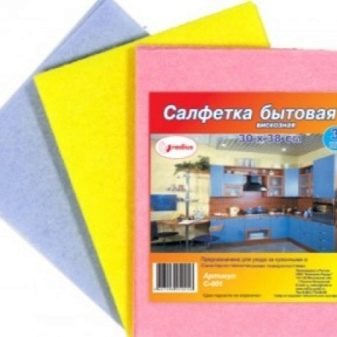

- Jemako. The manufacturer offers three lines of rags in different colors. Yellow ones are used for everyday cleaning, green ones allow you to remove stubborn dirt from various surfaces.The blue ruler is made especially for emergencies when you need to get rid of old and stubborn stains.
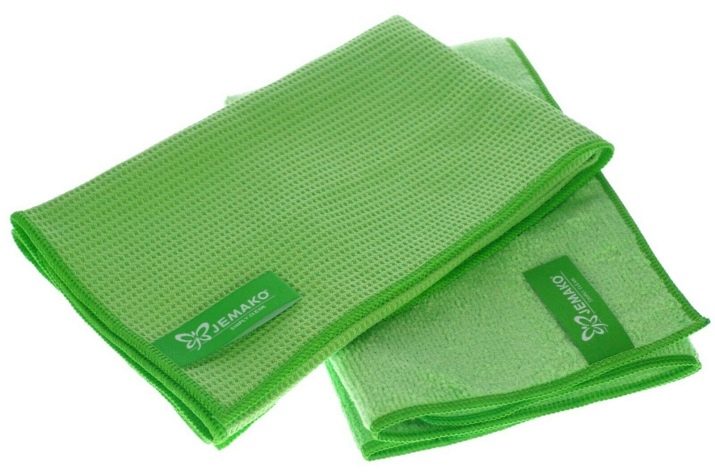
- Freken BOK. Microfiber cloths are almost universal. They can be used on a variety of surfaces. The company offers convenient packaging with a different number of rags in the package.
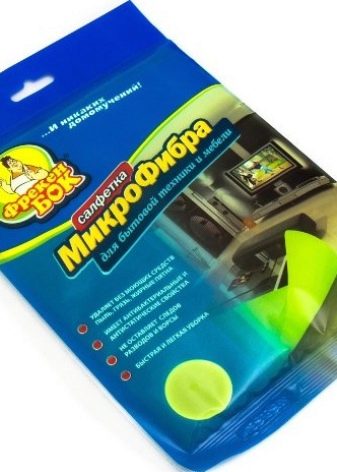
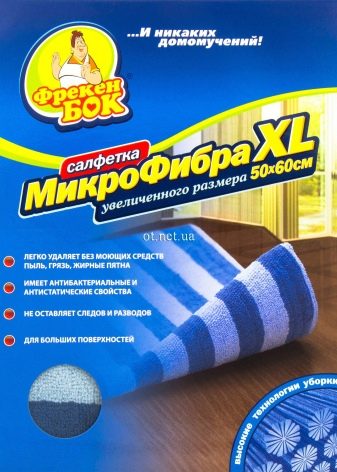
- Cleania. The domestic manufacturer has a wide range of products. You can purchase a cleaning cloth from any material at a reasonable price.
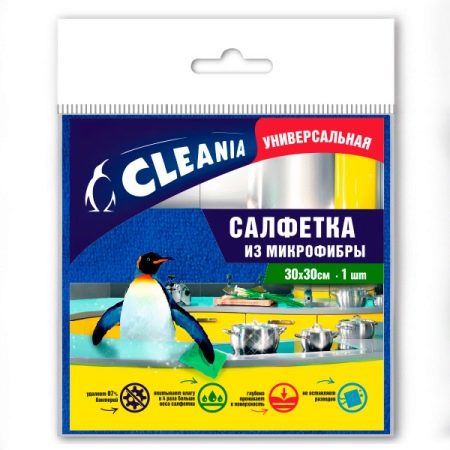
Many manufacturers offer wipes with which you can discard most household chemicals. Hypoallergenic formulations are completely safe for humans. When choosing, it is worth focusing on which surfaces are to be processed. Reusable products are easy to wash and dry. Some napkins can last for about two years.

Criterias of choice
Cleaning rags are designed for a specific purpose. It is important to consider your preferences and the properties of the surfaces to be processed. A set of rags for each housewife is formed differently. Also, a lot depends on what kind of pollution has to be removed.
The choice directly depends on the purpose of use.
- For the floor. We are talking about wet cleaning. In some cases, the floors are additionally wiped dry. The rag should be large, absorb moisture well and penetrate microcracks. Microfiber or rayon is a good option.
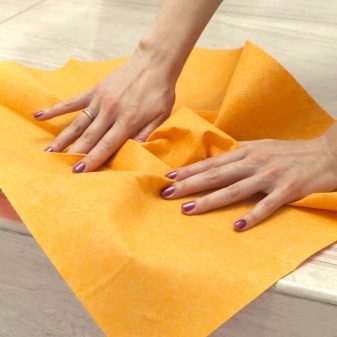

- For kitchen. Tough stains should be dealt with here. In the kitchen, you will have to remove splashes, grease, food debris. It is best to use bamboo or cellulose napkins.
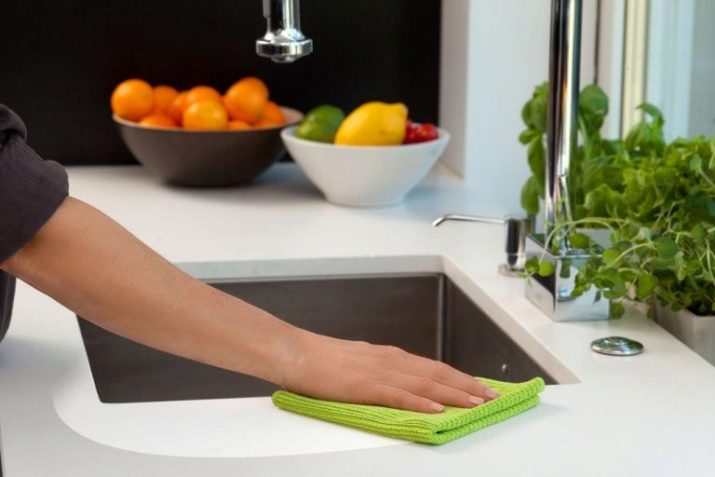
- For glasses. Do not use hard abrasive rags to clean the window. Primary treatment involves removing dirt. In this case, it is better to use napkins that absorb moisture well. Medium size will provide comfortable and quick cleaning. A good solution would be a viscose, microfiber or latex napkin.

- For tiles. Ceramic wall covering requires careful and careful maintenance. The rag should clean seams and micro cracks. Cellulose is a great solution.
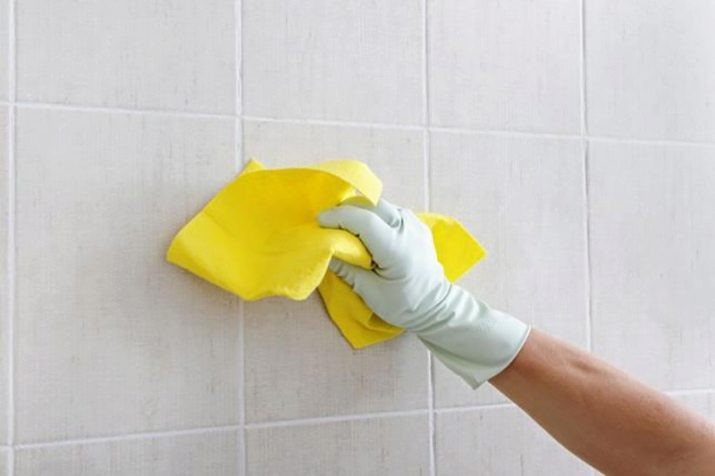
- For furniture. In this case, it is as simple as possible to use large napkins, which do not have to be wetted. This will quickly collect dust. Microfiber, rayon or cellulose products work best.
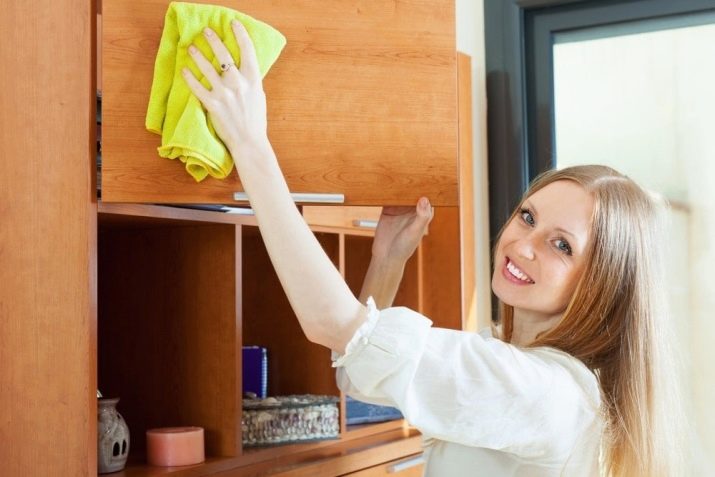
- For household appliances. In this case, choose small wipes for dry cleaning. An alternative would be wet ones, which are impregnated with a special screen cleaner.
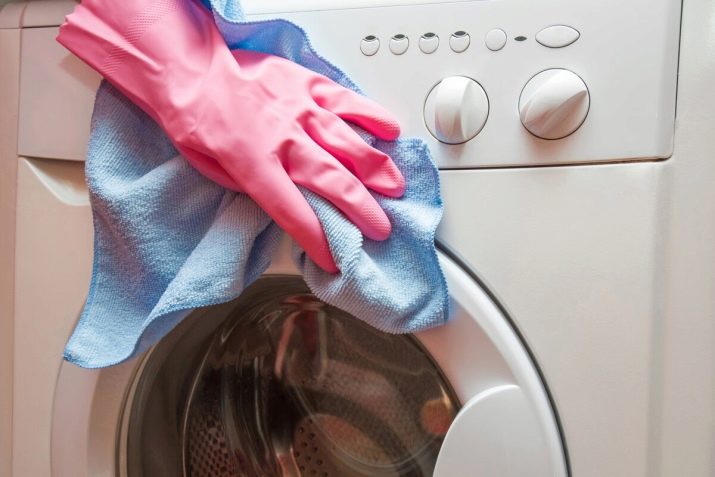
- For dishes. Even plates and glasses can be washed with napkins. Bamboo is considered the best option. The material does not absorb odors, does not become greasy. Also, bamboo can remain wet for a long time, mold does not form on it.

Multipurpose cellulose wipes can be taken in large sets and used on virtually all surfaces. Some housewives prefer to combine products from different materials. In this case, less intensive use and reusable rags last longer.
It is only important to properly store and clean them.

Useful Tips
Reusable wipes can last for several years if properly cared for. Don't keep the rag dirty. It is important to rinse and dry it first. It is convenient to use hangers or clothespins-holders. So the products will always be clean and dry, it will be much easier to find what you need.
There are also secrets when choosing rags. Typically, viscose and cellulose napkins are interchangeable. The properties of the materials are similar, they are easy to process the same surfaces.
You should not store a product that has exhausted its resource. Cleaning with an old and damaged napkin will be more of a hassle than good.

It is impossible to do with just one rag. However, the most versatile are microfiber and bamboo napkins. With their help, you can process any surface in the apartment, even wash the dishes. Intensive use leads to a decrease in the service life, this should be taken into account.
